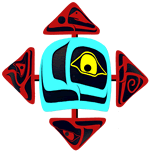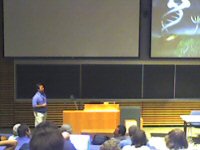Main Menu
Welcome
 Larry Young works on voles. The Prairie Vole is highly social, monogamous and biparental. In contrast, the closely related Montane Vole is solitary, promiscuous and uniparental. Larry's work received quite some press, so this talk will be interesting.
Larry Young works on voles. The Prairie Vole is highly social, monogamous and biparental. In contrast, the closely related Montane Vole is solitary, promiscuous and uniparental. Larry's work received quite some press, so this talk will be interesting.Oxytocin and vasopressin are involved in social bonding both in humans and voles. In voles, the expression patterns of both the oxytocin and the vasopressin receptors differ substantially between Prairie and Montane voles. Blocking action of these receptors in the Prairie voles disrupts bond-forming. It appears that both receptors are used in the circuits mediating the recognition of social cues. Larry contends that pair bonding is very similar to conditioned place preference in rats. Male Prairie voles get conditioned to the smell of the individual female, while male Montane voles get conditioned to the smell of receptive females in general.
How do the vasopressin and oxytocin receptors mediate this difference? The genes for the two receptors differ in their sequence. For instance, a microsatellite in the vasoprssing receptor is short in Montane voles and long in Prairie voles.
Oxytocin in humans: intranasal infusion increases trust and "mind reading", women with early childhood abuse shoe reduced levels in CSF and oxytocin is being used for treating autism.
Larry then went on to show some work on a vole model for social loss. Behavioral tests include a forced swim test and a tail suspension test. Prairie vole males that have been separated from their partners show similar behaviors in these test as animals which have been made depressed by learned helplessness treatment.

Posted on Friday 27 July 2007 - 20:27:35 comment: 0
{TAGS}
{TAGS}
You must be logged in to make comments on this site - please log in, or if you are not registered click here to signup
Render time: 0.0746 sec, 0.0157 of that for queries.





